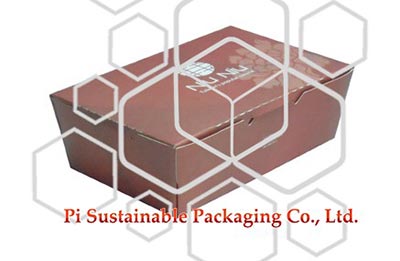What is the best packaging for chocolate?
Jun 12,2024 | Views: 1040
The best packaging for chocolate depends on several factors, including the type of chocolate, its shelf life, protection from environmental factors, sustainability concerns, and marketing objectives. Here are some key considerations and packaging options:
Aluminum Foil: Excellent barrier properties against light, moisture, and oxygen. Often combined with paper or plastic for additional strength.
Plastic Films: Materials like polypropylene or polyethylene provide good barriers and are often used in flexible packaging.
Paper and Cardboard: Often used for outer packaging, providing structural support and a surface for branding. When combined with foil or plastic, it offers better protection.
Eco-friendliness: Consumers are increasingly concerned about sustainability. Biodegradable, compostable, and recyclable materials are preferred.
Foil Wrappers: Common for individual pieces or bars, offering excellent protection and a premium feel.
Paper Wrappers: Often used in combination with foil for a balance of protection and sustainability.
Boxes:
Cardboard Boxes: Common for high-end chocolates and gift packaging. They provide good protection and ample space for branding.
Plastic Boxes: Offer good visibility and protection but are less favored due to environmental concerns.
Pouches and Bags:
Resealable Pouches: Useful for chocolate pieces or smaller bars, offering convenience and freshness.
Stand-up Pouches: Provide good shelf presence and are often used for chocolate-covered products.
Tins and Jars: Often used for luxury chocolates or special editions, offering excellent protection and a reusable container.
Informative: Including information about the product, such as ingredients, nutritional information, and ethical sourcing, can influence purchasing decisions.
For Chocolate Pieces and Assortments: Use a sturdy cardboard box with compartments to prevent movement and damage, possibly combined with a clear plastic window to display the chocolates.
For Everyday and Bulk Chocolates: Resealable plastic pouches or stand-up pouches with good barrier properties provide convenience and protection.
Smart Packaging: Incorporating QR codes or NFC tags to provide consumers with information about the chocolate's origin, production process, and sustainability efforts.
In summary, the best packaging for chocolate balances protection, sustainability, convenience, and aesthetic appeal, tailored to the specific type of chocolate and target market.
Prev: How do you pack chocolate in a box?
Next: Is eco-friendly packaging really eco-friendly?
1. Material Considerations
Barrier Properties: Chocolate is sensitive to light, oxygen, and moisture, which can cause it to spoil or lose quality. Packaging materials should have good barrier properties to protect against these elements. Common materials include:Aluminum Foil: Excellent barrier properties against light, moisture, and oxygen. Often combined with paper or plastic for additional strength.
Plastic Films: Materials like polypropylene or polyethylene provide good barriers and are often used in flexible packaging.
Paper and Cardboard: Often used for outer packaging, providing structural support and a surface for branding. When combined with foil or plastic, it offers better protection.
Eco-friendliness: Consumers are increasingly concerned about sustainability. Biodegradable, compostable, and recyclable materials are preferred.
2. Types of Packaging
Wrappers:Foil Wrappers: Common for individual pieces or bars, offering excellent protection and a premium feel.
Paper Wrappers: Often used in combination with foil for a balance of protection and sustainability.
Boxes:
Cardboard Boxes: Common for high-end chocolates and gift packaging. They provide good protection and ample space for branding.
Plastic Boxes: Offer good visibility and protection but are less favored due to environmental concerns.
Pouches and Bags:
Resealable Pouches: Useful for chocolate pieces or smaller bars, offering convenience and freshness.
Stand-up Pouches: Provide good shelf presence and are often used for chocolate-covered products.
Tins and Jars: Often used for luxury chocolates or special editions, offering excellent protection and a reusable container.
3. Design and Branding
Aesthetic Appeal: Packaging should attract consumers through appealing design, colors, and branding elements. High-quality printing and finishes like embossing or foil stamping can enhance the perceived value.Informative: Including information about the product, such as ingredients, nutritional information, and ethical sourcing, can influence purchasing decisions.
4. Functional Considerations
Convenience: Easy-to-open and resealable packaging enhances user experience.Portion Control: Individual wrappers within a larger package can help with portion control and maintaining freshness.
Recommendations
For Premium Chocolate Bars: Use a combination of aluminum foil for the inner wrap and high-quality printed paper or cardboard for the outer wrap. Consider eco-friendly materials to appeal to sustainability-conscious consumers.For Chocolate Pieces and Assortments: Use a sturdy cardboard box with compartments to prevent movement and damage, possibly combined with a clear plastic window to display the chocolates.
For Everyday and Bulk Chocolates: Resealable plastic pouches or stand-up pouches with good barrier properties provide convenience and protection.
Innovations in Chocolate Packaging
Edible Packaging: Some companies are exploring edible films made from natural ingredients to wrap chocolates, reducing waste.Smart Packaging: Incorporating QR codes or NFC tags to provide consumers with information about the chocolate's origin, production process, and sustainability efforts.
In summary, the best packaging for chocolate balances protection, sustainability, convenience, and aesthetic appeal, tailored to the specific type of chocolate and target market.

 English
English 日本語
日本語 Français
Français Deutsch
Deutsch Español
Español
